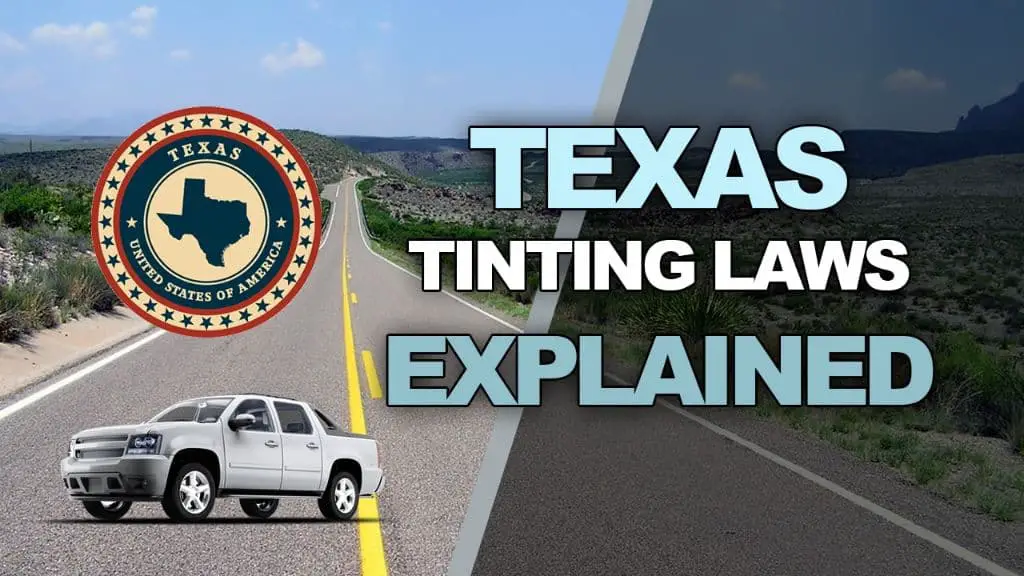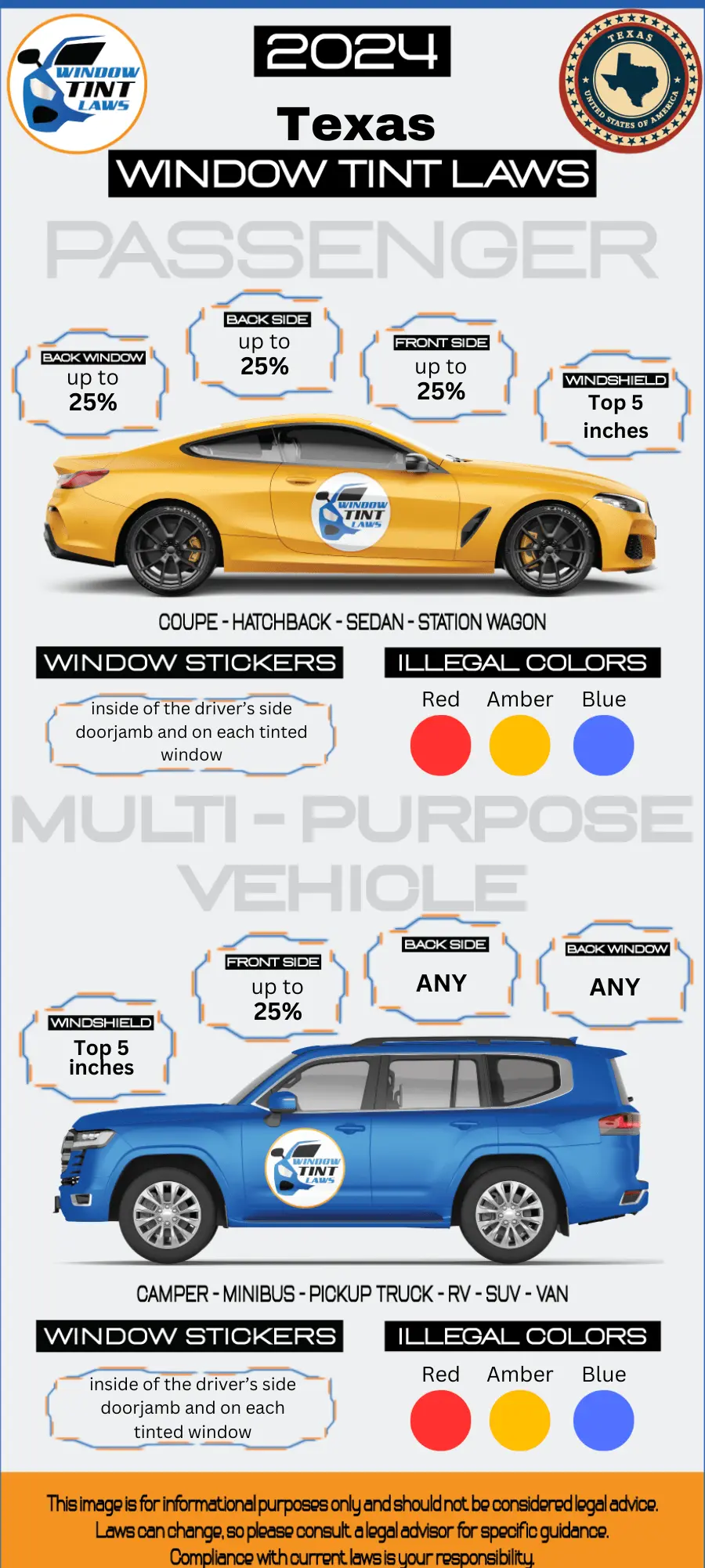

Article Created by Ryan Pietrzak
Last updated on February 14, 2024Texas Tint Laws – 2024 Updated Legal Tint Limit
Please note that Texas Tint Laws Regulation can change daily and may be interpreted differently at the city or county level. We recommend verifying this information with your local DMV or law enforcement agencies. We have manually fact-checked this content using official state resources. Texas enacted tinting laws in 2009. If any information provided is incorrect or outdated, please contact us so we can make the necessary corrections. Thank you.
2024 Texas Tint Laws – Legal Tint Limit For Passenger Vehicles
- Front Windshield: Non-reflective tint is allowed above the manufacturer’s AS-1 line or top 5 inches, .
- Front seat side windows: up to 25% tint darkness allowed
- Back seat side windows: Must allow more than 25% of light in.
- Rear window: Must allow more than 25% of light in.
2024 Texas Tint Laws – Legal Tint Limit For Multi-Purpose Vehicles
- Front Windshield: Non-reflective tint is allowed above the manufacturer’s AS-1 line or on the top 5 inches of the windshield.
- Front seat side windows: up to 25% tint darkness allowed
- Back seat side windows: Any tint darkness can be used
- Rear window: Any tint darkness can be used if you have side outside mirrors – 25% tint required without side mirrors

- Medical exemptions: Texas tint laws permit darker tints on front side windows with a doctor’s note
- Texas tint law prohibits metallic or reflective tint on any of the windows
- Texas tint laws are statewide with no additional local regulations
- Violating Texas tint laws can cost for a window tint ticket can range from $20 to $25 for a first offense.
What does VLT Mean according to Texas Tint Laws?
- Window tint film’s light transmission is measured as VLT (Visible Light Transmission) and each state has its own legal limits for VLT on car windows.
- A HIGHER VLT means that more light is allowed to pass through the window tint film.
- Example: a 75% tint will allow 75% of the light to pass through whereas a 5% tint will only allow 5% of the light to pass through, making the 5% tint a much darker film.
- Texas window tint laws has specific VLT limits for Passenger Vehicles and Multi-Purpose Vehicles.
FAQ’s Regarding Texas Tint Laws and Texas Legal Tint Limit
What is the darkest legal tint in Texas?
In Texas, the darkest legal tint for car windows varies by window location. For the front side windows, the tint must allow more than 25% of light in. For the back side and rear windows, any darkness can be used. The windshield can have a non-reflective tint above the manufacturer’s AS-1 line or top 5 inches. These regulations are designed to ensure sufficient visibility while allowing some degree of privacy and sun protection.
Are police exempt from window tint laws in Texas?
In Texas, law enforcement vehicles are typically exempt from the standard window tint laws that apply to civilian vehicles. This exemption allows police vehicles to have window tints that may not necessarily comply with the regulations applicable to regular vehicles. This is generally in place to accommodate the operational needs and requirements of law enforcement agencies.
How do I get a tint waiver in Texas?
In Texas, to obtain a window tint waiver for medical reasons, an individual must submit a request with a statement from a physician. This statement should verify that the person has a condition requiring protection from sunlight exposure beyond the standard tinting levels. Upon approval, this medical exemption allows for darker tinting on vehicle windows than normally permitted under Texas law.
How much is a tint ticket in Texas?
In Texas, the cost for a window tint ticket can range from $20 to $25 for a first offense. If the tint is not removed and a second ticket is issued, the penalties, including court costs, may increase to as much as $275.
Can you get pulled over for tint in Texas?
Yes, in Texas, you can be pulled over for having window tint that does not comply with the state’s tinting regulations. Texas law enforcement officers are authorized to stop vehicles if they suspect the window tint is darker than the legal limits. Non-compliance with these regulations can result in a traffic stop and potentially lead to fines or other penalties.
How to get a Tint Exemption in Texas
Motorists may request a medical exemption from the Texas Department of Public Safety by submitting an application and a signed statement or prescription from a licensed physician, ophthalmologist, or optometrist. This statement should state that it is his or her opinion that the exemption is necessary to safeguard the motorist’s health.
With medical waivers, light transmission can be under 25% VLT on any windows except the windshield. An untinted UV filter can be applied to the windshield provided it does not reduce light transmission by more than 5%.
For more information regarding window tint medical exemptions in _____ you can check out this resource:
- Texas Department of Public Safety – Window tinting standards
- Texas Department of Public Safety – Application for window tint medical exemption (.pdf file)

Ryan Pietrzak
Creator of Windowtintlaws.us
